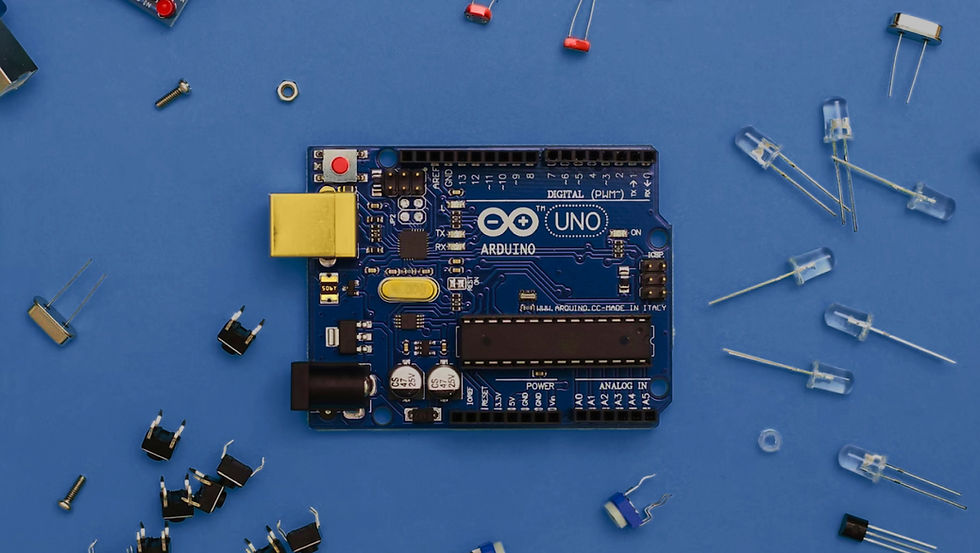ECO-CLEAN GRAPHENE INKS PAVES WAY FOR SCALABLE 3D PRINTING
- thefxigroup
- Mar 12
- 3 min read

With its remarkable conductivity, tensile strength and sustainability, graphene is transforming the 3D printing industry. Researchers are increasingly exploring its potential utilization in eco-friendly ink formulations. Their aim is to enhance both performance and environmental responsibility. By incorporating graphene into sustainable 3D printing ink, the industry can move away from its reliance on harmful chemicals, promote recyclability and advance greener manufacturing practices.
Traditionally, graphene dispersions have relied on solvents such as N-Methyl-2-pyrrolidone and dimethylformamide, which pose serious health and ecological risks due to their toxicity and slow biodegradation. However, new research has shown that water/ethanol mixtures, combined with stabilizing agents like surfactants or biopolymers, offer a safer and more sustainable alternative. These water-based formulations not only reduce environmental impact but also improve the ink’s processability for various printing techniques, including inkjet and extrusion-based printing. The low-boiling point of ethanol further allows for rapid evaporation, ensuring stable graphene layers that bond well with flexible substrates like textiles and biodegradable polymers. This innovation paves the way for sustainable 3D printing applications, particularly in flexible electronics and biodegradable sensor manufacturing.
One of the most promising graphene-based ink advancement is its compatibility with renewable materials. Graphene can be integrated into inks derived from natural sources such as soybean oil and polyphenols. These natural binders offer an environmentally alternative to petroleum-based resins while enhancing the sustainability of 3d printing. Furthermore, graphene-based inks can be designed for recyclability, which means that printed products can be broken down and converted back into graphene. This process promotes a circular economy, reducing waste and extending the lifecycle of 3D printing materials. By leveraging renewable feedstocks and advanced recycling techniques, graphene inks provide a practical pathway toward fully sustainable additive manufacturing.
Graphene-based inks are not only highly conductive but also demonstrate broad compatibility with various substrates, including plastics, textiles, and flexible electronics. These inks are particularly well-suited for high-resolution 3D extrusion printing, allowing for the precise fabrication of intricate structures. Their superior electrical properties make them ideal for applications in wearable electronics, biomedical sensors, and smart devices, where sensitivity and selectivity are crucial. The combination of affordability, versatility, and eco-friendliness positions graphene inks as a key innovation in next-generation printed electronics and intelligent materials.
To further improve sustainability, nitrogen-doped graphene nanosheets can be made using a salt-templated method. This results in scalable, safe and environmentally benign inks that are particularly suited for energy storage and applications. The ability to print these inks on diverse materials enhances their viability in industrial and consumer applications. Another thing that makes graphene standout is their potential for reuse. Graphene nanoplatelets serve as thixotropic additives in epoxy resin inks, allowing printed materials to be recycled without degrading their physical properties, which ensure long-term material sustainability in 3D printing.
A recent breakthrough by researchers at the University of Waterloo, documented in their study “Additive-free graphene-based inks for 3D printing functional conductive aerogels”, highlights a major innovation—the world’s first all-graphene ink. Unliked traditional formulations, this new ink disperses graphene nanosheets in water while maintaining conductivity. This eliminates the need for chemical solvents and additives, making graphene-based 3D printing more accessible, versatile and environmentally safe.

The versatility of graphene inks extends across multiple industries, including wearable technology, automotive manufacturing, environmental solutions, and energy storage. Graphene-based sensors can be integrated into smartwatches, fitness bands, and medical monitoring devices, enhancing real-time health tracking. In the automotive industry, graphene inks enable the production of 3D-printed lightweight components that improve fuel efficiency and durability. Additionally, graphene-printed structures contribute to advanced water filtration and desalination systems, addressing global clean water challenges. In the field of sustainable energy, these inks support the development of scalable energy storage devices, paving the way for more efficient and eco-friendly power solutions.
Graphene-based inks present a transformative opportunity for sustainable 3D printing, combining conductivity, flexibility, and recyclability. Through renewable materials, recyclable processes, and solvent-free production, these inks pave the way for greener and more efficient manufacturing. As research continues, graphene’s role in eco-friendly 3D printing will undoubtedly expand, solidifying its place as a key player in the future of sustainable technology.



